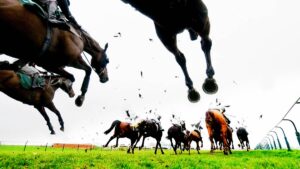The Australian economy gets some more good news as weekly jobs losses slow

(Getty Images)
New employment data from the ABS shows that (for now at least), Australia’s economy has weathered the worst of the COVID-19 storm.
With some help from the Tax office, the ABS is now releasing results fortnightly to more accurately account for the dramatic changes. And the latest figures showed the pace of job losses in the economy has started to slow.
Over the seven week period from mid-March (stage-two lockdown rules were enacted on March 22) to early May, total payrolls declined by 7.3 per cent.
The steepest falls were in the two largest state economies, NSW and Victoria, where job losses totalled 7.7 per cent and 8.4 per cent respectively.
However, today’s result “shows a further slowing in the fall in COVID-19 job losses between mid-April and early May”, Bjorn Jarvis, ABS head of labour statistics, said.
Job numbers declined by 1.1 per cent for the week ended May 2, up slightly from 0.9 per cent in the week ended April 25.
“The week-to-week changes are much smaller than they were early in the COVID-19 period,” Jarvis said.
To illustrate the scale of the impact on Australia’s hospitality sector, job losses in the “accommodation and food services” designation totalled 27.1 per cent since mid-March.
But to the week ended April 11, job losses in that sector had reached 33.3 per cent.
By age group, the under-20 bracket was hardest hit with losses amounting to 14.6 per cent over the seven-week time period.
The employment data follows some other tentative signs of recovery in the local jobs market, after data from UBS last week showed job ads were back on the rise.
With Australian states planning a phased return to business activity through to the end of June, total percentage job losses may continue declining in the weeks ahead.
The good news domestically followed some other signs of optimism on the global front, as US markets soared on the back of positive early results from a phase-one clinical trial for a COVID-19 vaccine.
US medical company Moderna said it could move towards a phase three (across thousands of patients) as early as July. The company took advantage of the excitement to announce a $US1.25bn ($1.92bn) share issue after US markets closed.
And across the pond in Europe, Germany’s Dax stock index surged more than 5 per cent after a key measure of economic activity indicated the contraction for Europe’s largest economy wouldn’t be as large as initially feared.
Australian stocks are trading almost 2 per cent higher in afternoon trade, while the Australian dollar is holding its overnight gains above 65 US cents.
UNLOCK INSIGHTS
Discover the untold stories of emerging ASX stocks.
Daily news and expert analysis, it's free to subscribe.
By proceeding, you confirm you understand that we handle personal information in accordance with our Privacy Policy.








